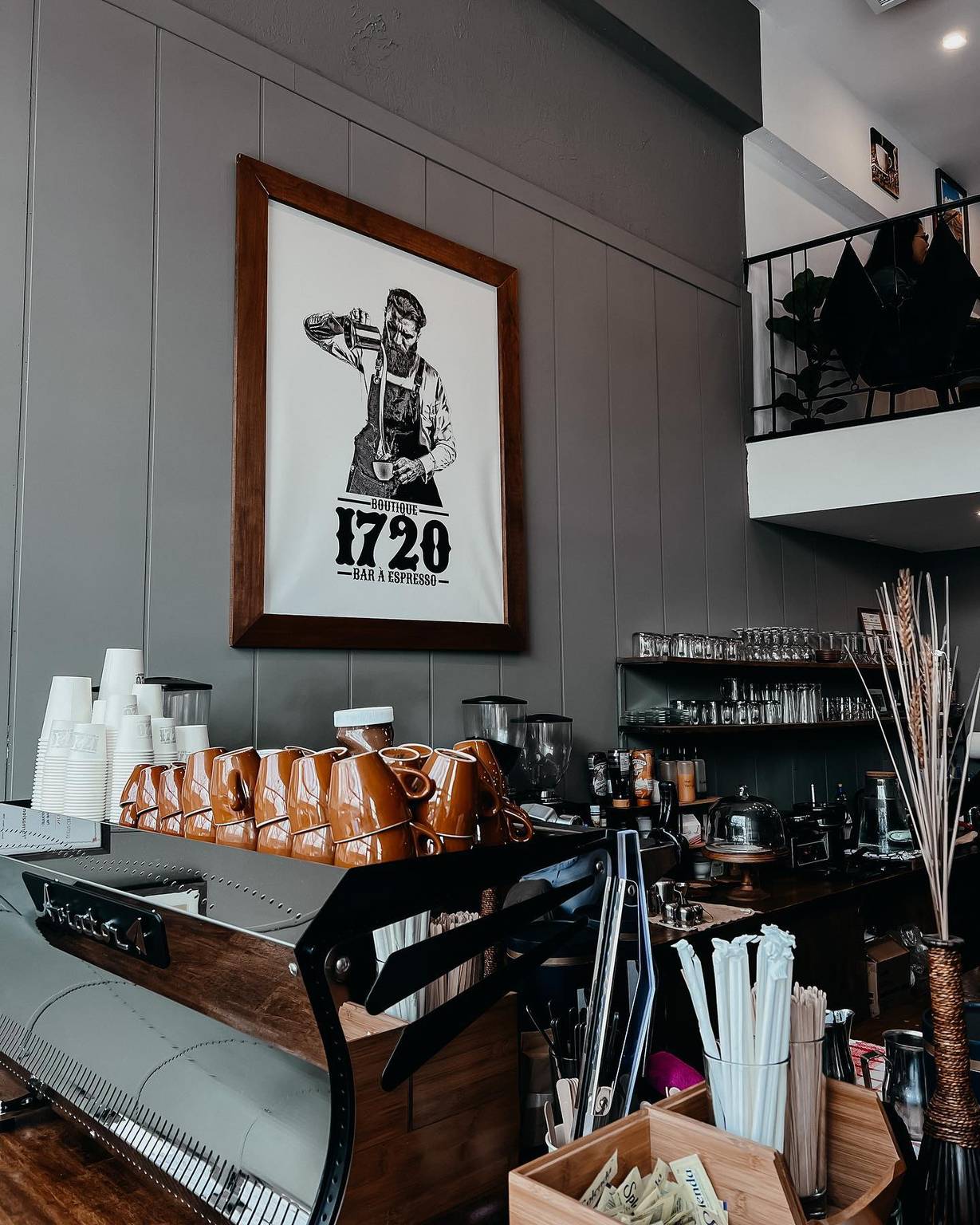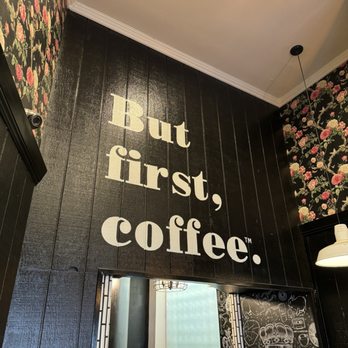AI-Generated Article
This content has been automatically generated using artificial intelligence technology. While we strive for accuracy, please verify important information independently.
There's something rather comforting about a warm cup of coffee, isn't there? It's a simple pleasure for many, a morning ritual, or a pick-me-up during the day. We often think of coffee as just a drink, a blend of beans and water, but what if there was more to it, a story brewing beneath the surface, perhaps even a message? It's kind of interesting to consider how much influence a daily habit can hold.
You know, every product, every brand, pretty much every item we bring into our lives, carries with it some sort of communication. Sometimes it's obvious, like a slogan on a billboard. Other times, it's a bit more subtle, woven into the way a company talks about itself or the feelings it tries to create. This isn't just about selling something; it's about connecting with people on a different level, inviting them to see things in a particular light, or so it seems.
So, what happens when we start to look at our coffee through this lens of influence? What if the way a coffee is presented, the stories told about its origins, or the values it claims to represent, are all part of a bigger effort to shape our views? This idea, which we're calling "propaganda coffee," isn't about anything sinister; it's just about recognizing the various ways messages can travel, even in something as everyday as your morning cup. It's really about understanding the quiet whispers that might be there.
- Anastasia Pagonis Erome
- Seafolly Swimwear
- Fallen Angels Clothing
- Happy Hour Tampa Fl
- Brittany Daniel Tits
Table of Contents
- What is Propaganda Coffee Anyway?
- How Messages Shape Our Coffee Choices
- Why Does Propaganda Matter in Your Coffee Cup?
- The Subtle Art of Persuasion with Propaganda Coffee
- How Does Propaganda Coffee Get Its Message Across?
- From Beans to Beliefs - The Journey of Propaganda Coffee
- Can You Spot Propaganda in Your Coffee?
- Recognizing the Hidden Agendas of Propaganda Coffee
What is Propaganda Coffee Anyway?
When we talk about something being "propaganda," we're generally referring to a type of communication that has a clear goal: to sway or convince people to go along with a certain plan or way of thinking. It's often not completely neutral, and it might pick and choose facts to get its point across, you know? Think about it this way: it's like someone telling a story, but they're leaving out some parts or highlighting others to make you feel a certain way about the characters or the plot. This applies to so much more than just political speeches.
So, when we apply this idea to "propaganda coffee," we're considering how a coffee brand or a particular coffee product might use its communications to influence what you think or how you feel about it. It's not about the coffee itself being a political statement, but rather how the information around it is presented. It could be about making you believe this coffee is the most ethical, the most flavorful, or perhaps even the only choice for a certain lifestyle. Basically, it's about guiding your perception.
This kind of communication, which aims to spread a particular viewpoint, might involve sharing information or concepts to support a cause, or even to cast doubt on an opposing idea. It's a way of shaping public opinion, really. For "propaganda coffee," this could mean highlighting only the positive aspects of its production, or perhaps subtly suggesting that other coffee types aren't as good. It's all about directing your attention and your feelings, and that's kind of a powerful thing.
Historically, this kind of persuasive communication became much more common when more people could read and when mass media started to appear. Governments, for instance, learned how to use these new ways of sharing information to talk to lots of people at once. With "propaganda coffee," we see a similar thing happening in the marketplace. Brands use various channels, from social media to advertisements, to share their chosen messages with a wide audience. It's more or less about reaching everyone they can.
How Messages Shape Our Coffee Choices
The way information, ideas, or even just images are put out there can really influence what we pick up and believe. Often, this involves giving just one side of a story, which can make it seem like there's only one right answer. When it comes to "propaganda coffee," this might look like a company always talking about its "sustainable" practices without mentioning other aspects of its business, or highlighting a specific origin story that sounds very appealing. It's about crafting a narrative, you know, a story that resonates with people.
This kind of deliberate spread of information, whether it's ideas or even rumors, is meant to either help or hurt someone, a group, or even a whole country. It's a tool to get people on board with a particular agenda. For a "propaganda coffee" brand, this might mean creating a feeling of community around their product, suggesting that by drinking their coffee, you're part of something bigger, something good. Or, perhaps, implying that other brands don't share these same values. It's a subtle push, in some respects.
These persuasive methods can show up in lots of different forms, from things you read in print to what you see on television or online. The goal is always to get people to think or act in a certain way. A "propaganda coffee" campaign might use striking visuals on its packaging, or create short, memorable phrases in its ads that stick with you. They want to create an impression that lasts, and that’s actually a pretty smart move.
At its core, this type of communication is about promoting a specific viewpoint or a particular cause. The information might be a bit slanted or even misleading, but its main purpose is to push a certain idea forward. So, with "propaganda coffee," the key thing to look for is what the brand is trying to promote. Is it a lifestyle? A set of values? A particular taste profile? It's all about getting you to lean in one direction, you know, to favor their offering.
Why Does Propaganda Matter in Your Coffee Cup?
You might wonder why any of this matters for something as simple as coffee. Well, it's because our choices, even small ones like what we drink, are often shaped by more than just taste or price. They're influenced by the stories we hear, the images we see, and the feelings those things create. When we understand how messages are put together to influence us, we become more aware consumers, and that's a pretty good thing, I think.
The impact of this kind of communication can be quite far-reaching, even in everyday items. If a coffee brand, for instance, consistently presents itself as being incredibly ethical, even if the full picture is a bit more complicated, it can build a strong reputation. This reputation then influences who buys their coffee and why. It's about building trust and loyalty, and that, you know, can be a very powerful thing for a business.
It matters because it helps us to look beyond the surface. When a company uses selective facts or focuses only on one part of its story, it's trying to guide our perception. By recognizing this, we can ask more questions and seek out a fuller picture. This doesn't mean every marketing message is "propaganda," but it does mean being a bit more thoughtful about what we're told. It's really about being a more informed person.
Ultimately, understanding the role of persuasive communication in products like "propaganda coffee" helps us make choices that truly align with our own values, rather than just reacting to what we're told. It empowers us to be more deliberate about what we support and consume. It's like, you know, being able to see the strings behind the puppet show, in a way. That's pretty valuable.
The Subtle Art of Persuasion with Propaganda Coffee
The art of persuasion, especially when it's subtle, can be very effective. It's not always about shouting a message; sometimes it's about gently nudging someone in a particular direction. For "propaganda coffee," this might involve the quiet assurance on the packaging that the beans were "hand-picked with care," creating an image of quality and personal touch, even if that's a standard practice across the industry. It's about the feeling it evokes, more or less.
Consider how brands use visual elements. The colors, the fonts, the imagery on a coffee bag can all work together to tell a story without saying a word. A rustic, earthy design might suggest authenticity and tradition, while a sleek, modern look could imply innovation and speed. These visual cues are part of the persuasive technique, shaping your initial impression of "propaganda coffee" before you even taste it. It's kind of fascinating how much they can communicate.
Then there's the language used in descriptions. Words like "artisanal," "single-origin," or "ethically sourced" carry weight and evoke specific ideas. While these terms can be accurate, they can also be used to create a certain aura around a product, making it seem more special or virtuous than it might otherwise appear. This careful word choice is a key part of how "propaganda coffee" shapes its image. It's very much about the feeling those words create.
Even the way a coffee is named can be a persuasive tool. A name that suggests adventure, comfort, or sophistication can influence how you perceive the coffee before you've even brewed it. These names aren't just labels; they're part of the story the brand wants to tell, guiding your expectations and desires. So, you know, the name itself can be a powerful piece of the puzzle for "propaganda coffee."
How Does Propaganda Coffee Get Its Message Across?
The ways messages are spread have changed a lot over time, especially with the rise of mass communication. What used to be limited to newspapers or radio now includes social media, online videos, and countless other digital platforms. This means that messages, including those from "propaganda coffee" brands, can reach people faster and in more varied ways than ever before. It's actually quite a transformation in how we receive information.
One common method is through carefully crafted stories. Instead of just listing features, a coffee brand might tell a compelling story about the farmers who grew the beans, the journey of the coffee from farm to cup, or the positive impact it has on a community. These stories are designed to create an emotional connection, making you feel good about your purchase. It's about building a bond, in a way, with the "propaganda coffee."
Another way is through endorsements or partnerships. When a popular figure or a respected organization associates with a coffee brand, it lends credibility and can influence people's perceptions. This isn't just about celebrity ads; it could be a partnership with an environmental group, suggesting shared values. These connections help to spread the brand's message and make it seem more trustworthy, or so it appears.
Social media plays a huge role too. Brands can create communities around their coffee, encouraging people to share their experiences and feelings. User-generated content, like photos of people enjoying their coffee, acts as a form of social proof, subtly influencing others. This organic spread of information can be very powerful for "propaganda coffee," making its message feel more authentic and relatable. It's really about creating a shared experience.
From Beans to Beliefs - The Journey of Propaganda Coffee
The journey of coffee, from a tiny bean to a brewed cup, involves many steps, and each step can be a point where messages are introduced or reinforced. Consider the sourcing of the beans. A "propaganda coffee" brand might emphasize its direct trade relationships, suggesting fairness and transparency, which is a good thing. This focus helps build a specific image, even if other aspects of the supply chain are less highlighted. It's about what they choose to put forward.
Then there's the roasting process. Some brands might talk about their "small batch" roasting or their "artisanal" techniques, creating an image of careful craftsmanship and dedication. This kind of language suggests a superior product, even if the actual difference in taste is subtle. It’s part of the narrative that makes the "propaganda coffee" feel special, you know, a cut above the rest.
Packaging also tells a story. The materials used, the design, and the information printed on the bag all contribute to the overall message. Environmentally friendly packaging, for example, signals a commitment to sustainability, which can appeal to a certain type of consumer. This isn't just about protecting the coffee; it's about communicating values that align with the brand's agenda. It's like a silent conversation with the "propaganda coffee."
Even the serving suggestion can be part of the message. A brand might show its coffee being enjoyed in a serene, natural setting, implying tranquility and connection to nature. Or, it might be shown in a bustling city environment, suggesting energy and productivity. These images link the coffee to a desired lifestyle, subtly influencing how you perceive and use the product. It's more or less about creating a whole experience around the "propaganda coffee."
Can You Spot Propaganda in Your Coffee?
Learning to spot persuasive communication, even in something like coffee, means paying a bit more attention to how information is presented. It's not about being cynical, but about being aware. One way to do this is to notice if the information feels incomplete, or if it seems to be pushing a very strong, one-sided view. Are they telling you everything, or just the bits that make them look good? That's a good question to ask yourself.
Look for patterns in the language and imagery. Are certain words or phrases repeated often? Do the visuals consistently evoke a particular emotion or idea? If a brand always talks about "authenticity" but never about its actual production volume, that might be a hint. It's about recognizing the consistent themes that a "propaganda coffee" brand tries to establish. You know, what message are they really trying to get across?
Consider the source of the information. Is it coming directly from the brand, or from independent reviews or third-party certifications? While brand communication is important, looking for outside perspectives can help provide a more balanced picture. If a brand makes big claims, it's worth seeing if those claims are backed up by others. It's really about cross-referencing, in a way.
Finally, trust your gut feeling. If something feels too good to be true, or if a message seems overly simplistic for a complex product like coffee, it might be worth a second look. Being a thoughtful consumer means asking questions and seeking clarity, which is a very valuable skill in today's world. It's about being discerning when it comes to "propaganda coffee" and anything else you consume.
Recognizing the Hidden Agendas of Propaganda Coffee
Every piece of communication, particularly from a brand, has an agenda behind it. It's not necessarily a bad thing; businesses want to sell their products. But recognizing that agenda helps you understand the true purpose of the message. For "propaganda coffee," the agenda might be to position itself as the most environmentally friendly choice, or the most premium, or the most socially conscious. It's about what they want you to believe about them.
One way to uncover these agendas is to think about what's *not* being said. If a coffee brand talks extensively about its ethical sourcing but says nothing about its labor practices, that might be a gap worth exploring. Selective presentation of facts is a common technique in persuasive communication, and it's something to be aware of when looking at "propaganda coffee." It's like, what's missing from the picture?
Another aspect is understanding the emotional appeals. Does the communication try to make you feel guilty if you don't choose their product? Or does it try to create a sense of belonging or aspiration? These emotional hooks are often used to sway opinions and encourage certain behaviors. Recognizing these appeals helps you separate your feelings from the facts about "propaganda coffee." It's basically about seeing through the emotional pull.
Ultimately, the goal is to become a more critical receiver of information. This doesn't mean dismissing all brand messages, but rather approaching them with a thoughtful perspective. By understanding how persuasive communication works, you can make more informed decisions about the coffee you choose, and pretty much everything else. It's about being in control of your own choices, and that's a good feeling, you know, especially when it comes to your "propaganda coffee."
This article explored the idea of "propaganda coffee," looking at how communication aims to influence our choices. We considered what propaganda means, how messages shape our decisions about coffee, and why understanding this influence matters. We also looked at the subtle ways persuasion works in coffee branding and how brands get their messages across, from the beans' journey to the final brew. Finally, we discussed how to spot these persuasive techniques and recognize the underlying agendas in the coffee we choose.
🖼️ Related Images



Quick AI Summary
This AI-generated article covers Propaganda Coffee - The Story Behind Your Daily Brew with comprehensive insights and detailed analysis. The content is designed to provide valuable information while maintaining readability and engagement.
Jerad Kautzer I
✍️ Article Author
👨💻 Jerad Kautzer I is a passionate writer and content creator who specializes in creating engaging and informative articles. With expertise in various topics, they bring valuable insights and practical knowledge to every piece of content.
📬 Follow Jerad Kautzer I
Stay updated with the latest articles and insights